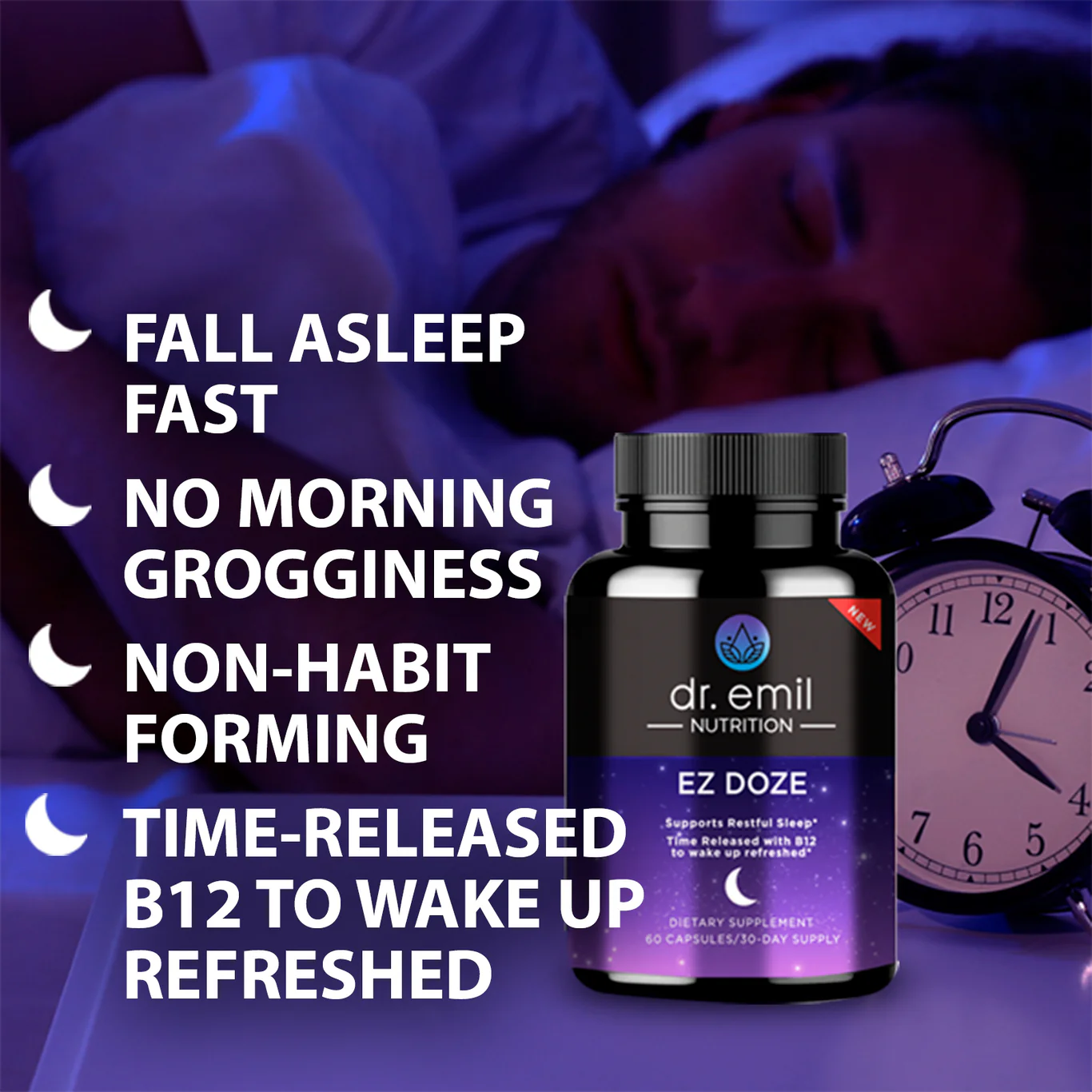Valerian root has captivated researchers and healthcare practitioners for decades as they seek to understand precisely how this traditional herb produces its well-documented therapeutic effects. While valerian's clinical benefits for sleep disorders, anxiety, and various other conditions have been recognized for centuries, the complex molecular mechanisms underlying these effects have only recently begun to be elucidated through modern scientific investigation.
Understanding valerian root's mechanism of action provides crucial insights for optimizing its therapeutic applications, predicting potential interactions, and developing more targeted herbal interventions.
Overview of Valerian Root's Active Compounds
Valerian root's therapeutic effects result from a complex mixture of bioactive compounds that work synergistically to influence multiple physiological systems. The primary active components include valerenic acid, isovaleric acid, various sesquiterpenes, flavonoids, alkaloids, and essential oils, each contributing distinct pharmacological properties to the herb's overall mechanism of action. Modern analytical techniques have identified over 150 different compounds within valerian root extracts, though the relative contribution of each component to the herb's therapeutic effects continues to be investigated.
The concentration and composition of these active compounds can vary significantly based on factors including plant genetics, growing conditions, harvesting timing, processing methods, and extraction techniques. This variability has important implications for understanding valerian's mechanism of action, as different preparations may emphasize different biochemical pathways and produce varying therapeutic effects.
Primary Bioactive Components
Valerenic acid is one of the most extensively studied components of valerian root, serving as a standardization marker for many commercial preparations. This sesquiterpene demonstrates specific affinity for various neurotransmitter systems and appears to play a central role in valerian root's neurological effects. Research indicates that valerenic acid concentrations often correlate with the therapeutic potency of valerian preparations, though other compounds undoubtedly contribute to the herb's overall activity.

Isovaleric acid, another key component, contributes to valerian's characteristic odor and demonstrates distinct pharmacological properties that complement valerenic acid's effects. Various flavonoids present in valerian root, including hesperidin, linarin, and 6-methyl apigenin, provide additional therapeutic mechanisms through their antioxidant and anti-inflammatory properties.
The volatile oil fraction of valerian root contains numerous compounds including bornyl acetate, camphene, and various monoterpenes that contribute to the herb's aromatic profile and may influence its absorption and distribution within the body. These volatile compounds may also directly contribute to valerian's therapeutic effects through interactions with olfactory and respiratory systems.
Primary Mechanism: GABA System Modulation
The most well-established mechanism through which valerian root exerts its therapeutic effects involves modulation of the gamma-aminobutyric acid (GABA) neurotransmitter system. GABA serves as the primary inhibitory neurotransmitter in the central nervous system, playing crucial roles in regulating neuronal excitability, promoting relaxation, and facilitating sleep. Dysfunction of GABAergic signaling is implicated in numerous conditions including anxiety disorders, insomnia, and various neurological conditions that valerian root traditionally addresses.
Valerian root influences the GABA system through multiple distinct but complementary mechanisms. Research indicates that certain valerian compounds can enhance GABA receptor activity, increase GABA availability at synaptic sites, and potentially influence GABA synthesis and metabolism. This multi-target approach to GABA system modulation may explain valerian's broad therapeutic effects and relatively favorable safety profile compared to synthetic GABAergic medications.
GABA Receptor Interactions
Valerian root compounds demonstrate complex interactions with various subtypes of GABA receptors, particularly GABA-A receptors that mediate many of the neurotransmitter's fast inhibitory effects. Unlike benzodiazepines, which bind to specific allosteric sites on GABA-A receptors, valerian compounds appear to interact with different receptor sites and may influence receptor function through multiple mechanisms.

Studies suggest that valerenic acid and related compounds can enhance GABA-A receptor activity without directly binding to the benzodiazepine binding site, potentially explaining why valerian produces calming effects without the tolerance, dependence, and withdrawal issues associated with benzodiazepine medications. This distinct mechanism of GABA-A receptor modulation offers a significant advantage for long-term therapeutic applications.
Research has also identified potential interactions between valerian compounds and GABA-B receptors, which mediate slower, more sustained inhibitory effects in the nervous system. These interactions may contribute to valerian's longer-lasting therapeutic effects and its ability to influence various physiological systems beyond the central nervous system.
GABA Availability and Metabolism
Beyond direct receptor interactions, valerian root may influence GABAergic signaling by affecting GABA availability at synaptic sites. Some research suggests that certain valerian compounds can inhibit GABA reuptake mechanisms, allowing GABA to remain active at synapses for extended periods. This mechanism would effectively amplify existing GABAergic signaling without requiring increased GABA synthesis.
Additionally, valerian root may influence GABA metabolism through interactions with enzymes involved in GABA synthesis and degradation. Some studies suggest that valerian compounds can inhibit GABA transaminase, the enzyme responsible for GABA breakdown, potentially leading to increased GABA concentrations in neural tissues.
Secondary Mechanisms: Neurotransmitter Systems
While GABA system modulation represents valerian root's primary mechanism of action, the herb also influences several other neurotransmitter systems that contribute to its therapeutic effects. These secondary mechanisms help explain valerian's broad spectrum of activity and its effectiveness for conditions that involve multiple neurochemical imbalances.
Serotonin System Interactions
Emerging research suggests that valerian root may influence serotonergic neurotransmission in a few different ways. Some valerian compounds appear to interact with serotonin receptors, particularly 5-HT5A receptors, which may contribute to the herb's sleep-promoting and mood-stabilizing effects. The serotonin system plays crucial roles in regulating sleep-wake cycles, mood, and anxiety, making these interactions potentially significant for understanding valerian's therapeutic applications.

Adenosine and Sleep Regulation
The adenosine system is another important pathway through which valerian root may exert its sleep-promoting effects. Adenosine accumulates in the brain during wakefulness and promotes sleep drive through its interactions with adenosine receptors. Some research suggests that valerian compounds may enhance adenosine receptor activity or influence adenosine metabolism, contributing to the herb's ability to promote natural sleep patterns.
This adenosine-mediated mechanism may explain why valerian tends to promote restorative sleep rather than simply causing sedation, as adenosine signaling is closely linked to the body's natural circadian rhythms and sleep homeostasis mechanisms.
Cellular and Molecular Mechanisms
At the cellular level, valerian root's therapeutic effects involve complex interactions with various molecular targets that influence neuronal function, cellular metabolism, and gene expression. Understanding these molecular mechanisms provides insights into valerian's effects on different cell types and organ systems.
Ion Channel Modulation
Research indicates that valerian compounds can influence various types of ion channels that regulate neuronal excitability and cellular function. Some studies suggest that valerenic acid and related compounds can modulate calcium channels, potentially affecting neurotransmitter release and neuronal firing patterns. These calcium channel interactions may contribute to valerian's ability to reduce neuronal hyperexcitability associated with anxiety and sleep disorders.

Valerian compounds may also influence potassium channels, which play crucial roles in regulating neuronal resting potentials and action potential generation. Modulation of potassium channel activity could contribute to valerian's calming effects by promoting neuronal hyperpolarization and reduced excitability.
Antioxidant and Anti-inflammatory Pathways
The flavonoid compounds present in valerian root contribute significant antioxidant and anti-inflammatory mechanisms that may support the herb's therapeutic effects. These compounds can scavenge reactive oxygen species, reduce oxidative stress, and modulate inflammatory signaling pathways that influence neurological function.
Chronic inflammation and oxidative stress are increasingly recognized as contributing factors in various neurological and psychiatric conditions. By addressing these underlying pathological processes, valerian's antioxidant and anti-inflammatory mechanisms may provide therapeutic benefits that extend beyond its direct neurotransmitter effects.
Pharmacokinetics and Bioavailability
Understanding how valerian root compounds are absorbed, distributed, metabolized, and eliminated provides crucial insights into the herb's mechanism of action and optimal therapeutic applications. The pharmacokinetic properties of valerian's active compounds influence their ability to reach target tissues, the duration of their effects, and their potential for interactions with other substances.
Absorption and Distribution
The bioavailability of valerian root compounds varies significantly based on their chemical properties and the formulation used. Lipophilic compounds like valerenic acid tend to be well-absorbed from the gastrointestinal tract and can readily cross the blood-brain barrier to reach their neural targets. Water-soluble compounds may have different absorption patterns and distribution profiles that influence their contribution to valerian's overall effects.
The timing of valerian administration relative to meals can significantly influence absorption, with some compounds showing enhanced bioavailability when taken with fats, while others may be better absorbed on an empty stomach. These pharmacokinetic considerations have important implications for optimizing valerian's therapeutic effects.

Metabolism and Elimination
Valerian compounds undergo extensive metabolism in the liver through various enzymatic pathways, including cytochrome P450 enzymes. Some metabolites may retain biological activity and contribute to valerian's prolonged effects, while others may be rapidly eliminated from the body.
The relatively short half-life of many valerian compounds helps explain why the herb typically requires consistent daily dosing to maintain therapeutic effects, unlike some synthetic medications that can provide sustained benefits with less frequent administration.
Tissue-Specific Mechanisms
Valerian root's mechanism of action extends beyond the central nervous system to influence various peripheral tissues and organ systems. Understanding these tissue-specific effects provides insights into valerian's broader therapeutic applications and potential side effects.
Cardiovascular System Effects
Research suggests that valerian compounds can influence cardiovascular function through direct effects on cardiac muscle and vascular smooth muscle. Some studies indicate that valerenic acid can promote vasodilation through calcium channel modulation and nitric oxide pathway enhancement, potentially contributing to blood pressure regulation and improved circulation.
The herb's effects on the autonomic nervous system, mediated primarily through its central GABAergic mechanisms, also indirectly influence cardiovascular function by modulating heart rate, cardiac output, and vascular tone.
Gastrointestinal System Interactions
Valerian root's antispasmodic properties appear to result from direct effects on gastrointestinal smooth muscle, mediated through similar calcium channels and neurotransmitter mechanisms that produce its central nervous system effects. These peripheral effects may contribute to valerian's traditional use for digestive complaints and stress-related gastrointestinal symptoms.
The herb's influence on the enteric nervous system, often called the "second brain," may also contribute to its effects on mood and anxiety through the gut-brain axis, representing an additional mechanism through which valerian may influence psychological well-being.
Dr. Emil's Options for Valerian Root Supplementation
Dr. Emil offers a unique approach to supplement formulation, combining medical expertise with evidence-based research to create products that leverage valerian root's complex mechanisms of action. As both a medical doctor and recognized authority in supplementation, Dr. Emil's formulations are designed to maximize the therapeutic potential of natural ingredients like valerian root while maintaining rigorous scientific standards.
Bedtime Burn Elite

Bedtime Burn Elite represents the innovative application of valerian root's GABAergic mechanisms in a comprehensive nighttime formula. This supplement combines valerian root powder with complementary ingredients like melatonin and lemon balm to enhance sleep quality while simultaneously supporting metabolic function through compounds like green tea extract and CLA oil powder. The formulation recognizes that valerian's influence on the GABA system can create an optimal neurochemical environment for both restorative sleep and metabolic processes that occur during rest periods. By incorporating valerian alongside metabolism-boosting ingredients, this product addresses the interconnected relationship between sleep quality and metabolic health, demonstrating how valerian's mechanisms can be strategically combined with other bioactive compounds.
EZ Doze

EZ Doze has a holistic approach to sleep supplementation that builds upon valerian root's established mechanisms while incorporating additional neurotransmitter-targeting compounds. This formula combines valerian's GABAergic effects with GABA supplementation, L-theanine's influence on alpha brain waves, and 5-HTP's serotonergic pathway modulation to create a comprehensive sleep support system.
The time-released capsule technology ensures sustained delivery of these compounds, potentially extending valerian's therapeutic window and optimizing its synergistic interactions with other ingredients. The inclusion of a B12 component addresses the complex relationship between sleep and energy metabolism, recognizing that effective sleep support must consider both the mechanisms that promote sleep onset and those that facilitate refreshing, restorative sleep cycles.
Future Research Directions
Despite significant advances in understanding valerian root's mechanisms of action, many questions remain that could further optimize its therapeutic applications. Future research priorities include detailed characterization of individual compound contributions, investigation of synergistic interactions between different valerian constituents, and exploration of novel therapeutic applications based on newly discovered mechanisms.
Advanced analytical techniques and molecular biology approaches continue to reveal new aspects of valerian's mechanism of action, suggesting that our understanding of this complex herb will continue to evolve and potentially expand its therapeutic applications.






